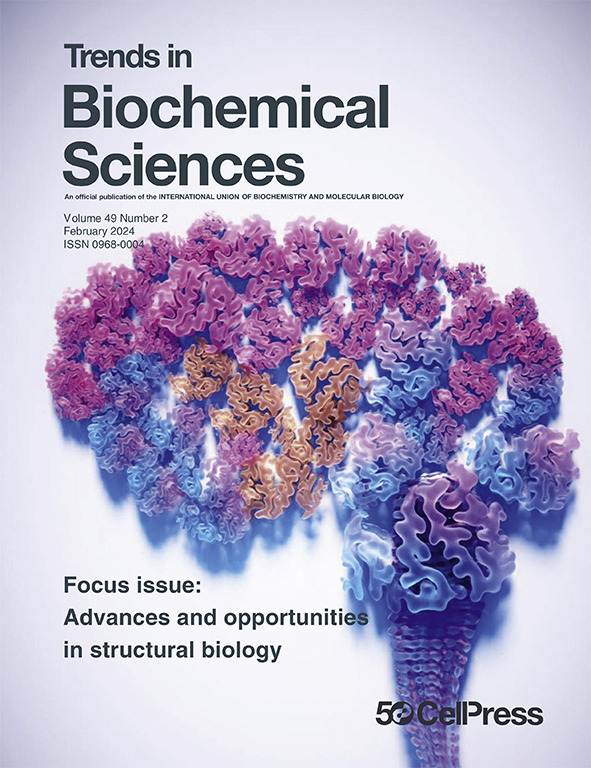Engineering RiPP pathways: strategies for generating complex bioactive peptides
IF 11.6
1区 生物学
Q1 BIOCHEMISTRY & MOLECULAR BIOLOGY
引用次数: 0
Abstract
Historically, natural products have been essential sources of therapeutic agents, many of which are currently used to manage various diseases. In recent years, ribosomally synthesized and post-translationally modified peptides (RiPPs) have garnered considerable interest in drug discovery and development due to their biosynthetic plasticity and their ability to generate diverse bioactive structural scaffolds. Unfortunately, many RiPPs have suboptimal bioavailability and proteolytic stability, significantly limiting their clinical potential. Moreover, the complexity of RiPP structures makes total synthesis extremely difficult. These drawbacks necessitate pathway engineering to create derivatives with potentially optimized physicochemical properties. Herein, we review recent efforts to surmount pathway engineering challenges and to rationally modify components of RiPP pathways for new functions to derive new bioactive analogs.
工程RiPP途径:生成复杂生物活性肽的策略。
从历史上看,天然产品一直是治疗剂的重要来源,其中许多目前用于治疗各种疾病。近年来,核糖体合成和翻译后修饰肽(RiPPs)由于其生物合成可塑性和产生多种生物活性结构支架的能力,在药物发现和开发中引起了相当大的兴趣。不幸的是,许多ripp的生物利用度和蛋白水解稳定性都不理想,这极大地限制了它们的临床潜力。此外,RiPP结构的复杂性使得全合成极为困难。这些缺点需要途径工程来创造具有潜在优化的物理化学性质的衍生物。在此,我们回顾了最近的努力,以克服途径工程的挑战,并合理地修改RiPP途径的新功能成分,以获得新的生物活性类似物。
本文章由计算机程序翻译,如有差异,请以英文原文为准。
求助全文
约1分钟内获得全文
求助全文
来源期刊

Trends in Biochemical Sciences
生物-生化与分子生物学
CiteScore
22.90
自引率
0.70%
发文量
148
审稿时长
6-12 weeks
期刊介绍:
For over 40 years, Trends in Biochemical Sciences (TIBS) has been a leading publication keeping readers informed about recent advances in all areas of biochemistry and molecular biology. Through monthly, peer-reviewed issues, TIBS covers a wide range of topics, from traditional subjects like protein structure and function to emerging areas in signaling and metabolism. Articles are curated by the Editor and authored by top researchers in their fields, with a focus on moving beyond simple literature summaries to providing novel insights and perspectives. Each issue primarily features concise and timely Reviews and Opinions, supplemented by shorter articles including Spotlights, Forums, and Technology of the Month, as well as impactful pieces like Science & Society and Scientific Life articles.
 求助内容:
求助内容: 应助结果提醒方式:
应助结果提醒方式:


